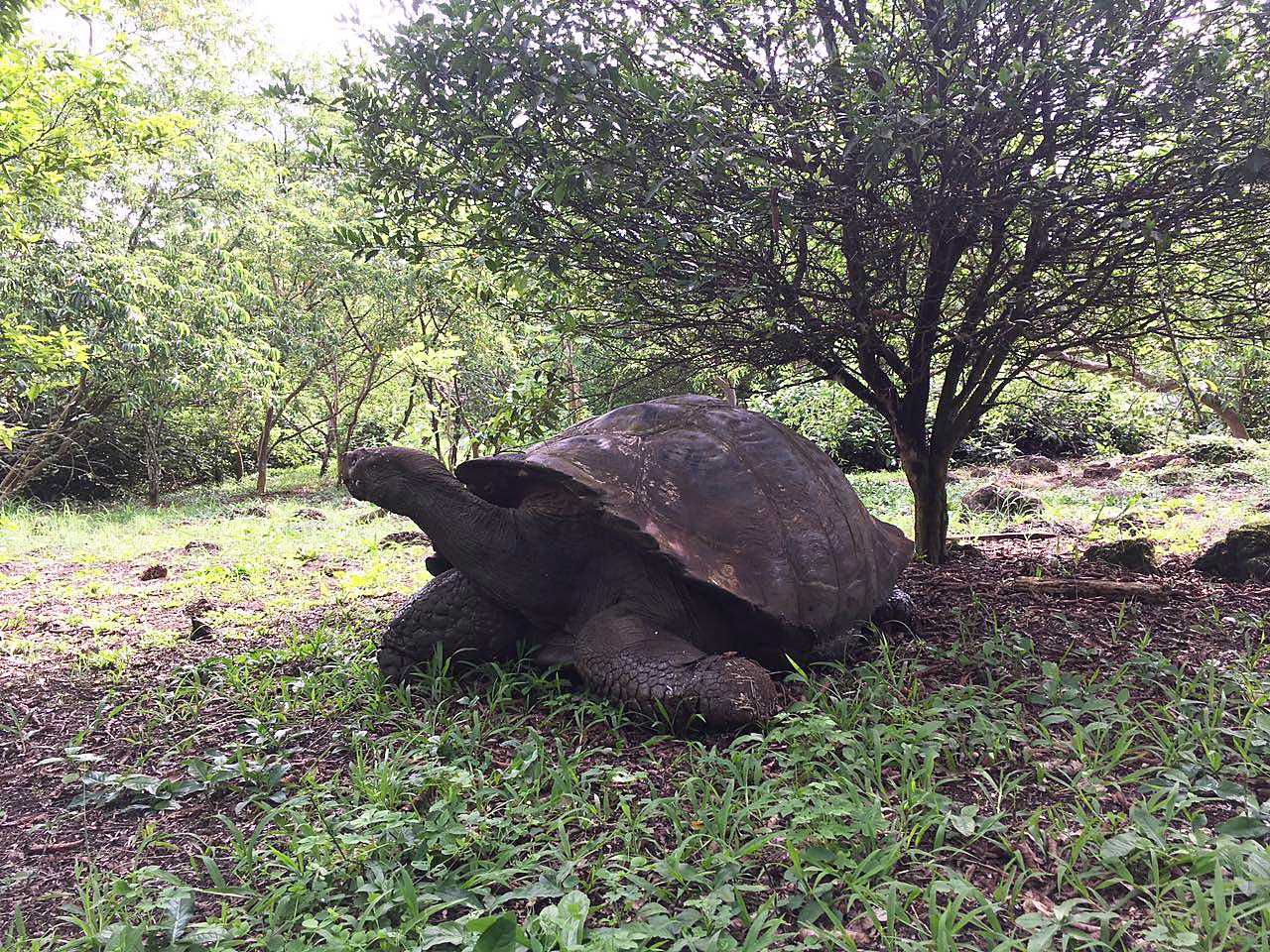This morning we were at Academy Bay located in Puerto Ayora. This is the largest town in the islands with a population of 18,000 people. Early in the morning we could appreciate the beautiful outline of the highlands with the sun shining on the farmlands as well as on National Park. At 8:00 am we disembarked on the municipal dock to start our excursions for the day. We headed first to visit the Darwin Foundation and National Park breading program of the Galapagos giant tortoises. There we had the chance to learn about some of the conservation and research programs being developed with the cooperation of these two different organizations whose main goals are to restore the ecology of the islands and to protect the endemic species that are now threated by introduced invasive plants and animals such as feral pigs, cats and rats.
In this area our explorers got to see and identify many of the species of Darwin finches, such as common cactus finches, vegetarian finches, small, medium, and large ground finches. We learned about the biological controls we use to get rid of many alien species that are affecting their population, which is the case of the mangrove finch whose species is in danger of extinction.
Later some guests went to visit the town to learn more about people living in the Galapagos Islands. Up in the mountains we visited a local family of farmers that are self-sufficient in their way of surviving, getting all the food supplies from mother earth. The Trapiche is the name of their farm and there we were able to see how they produce sugar-cane, brown sugar, melaza, and coffee. Some guests visited the Scalecia Foundation’s school, named “Tomas de Berlanga”, where the principal taught them about the new English, Leadership, and Math programs they are implementing to give the students a better education.
After lunch we went to visit El Chato ranch, which is one of the reserves of Giant Tortoises in the wild. There we could appreciate the lush green vegetation with giant tortoises roaming freely and feeding in their natural environment. Tortoises are big creatures that have evolved in isolation and we now have 11 species of them distributed among several islands. In this case we are looking at a very unique type of tortoise only found in Santa Cruz, which is a dome-shaped morpho type. Before leaving this place we had the chance to actually get “into the heart of the earth” inside a lava tunnel which gave us a new perspective of the island’s geological formation.
After visiting this island we headed back to the National Geographic Islander where we were able to enjoy unique music and artistic dances from local “Galapagueños” musicians with a mix of Andean music.
We were thrilled to have had another spectacular day full of new discoveries, emotions, explorations and adventure in the Galapagos Islands.







